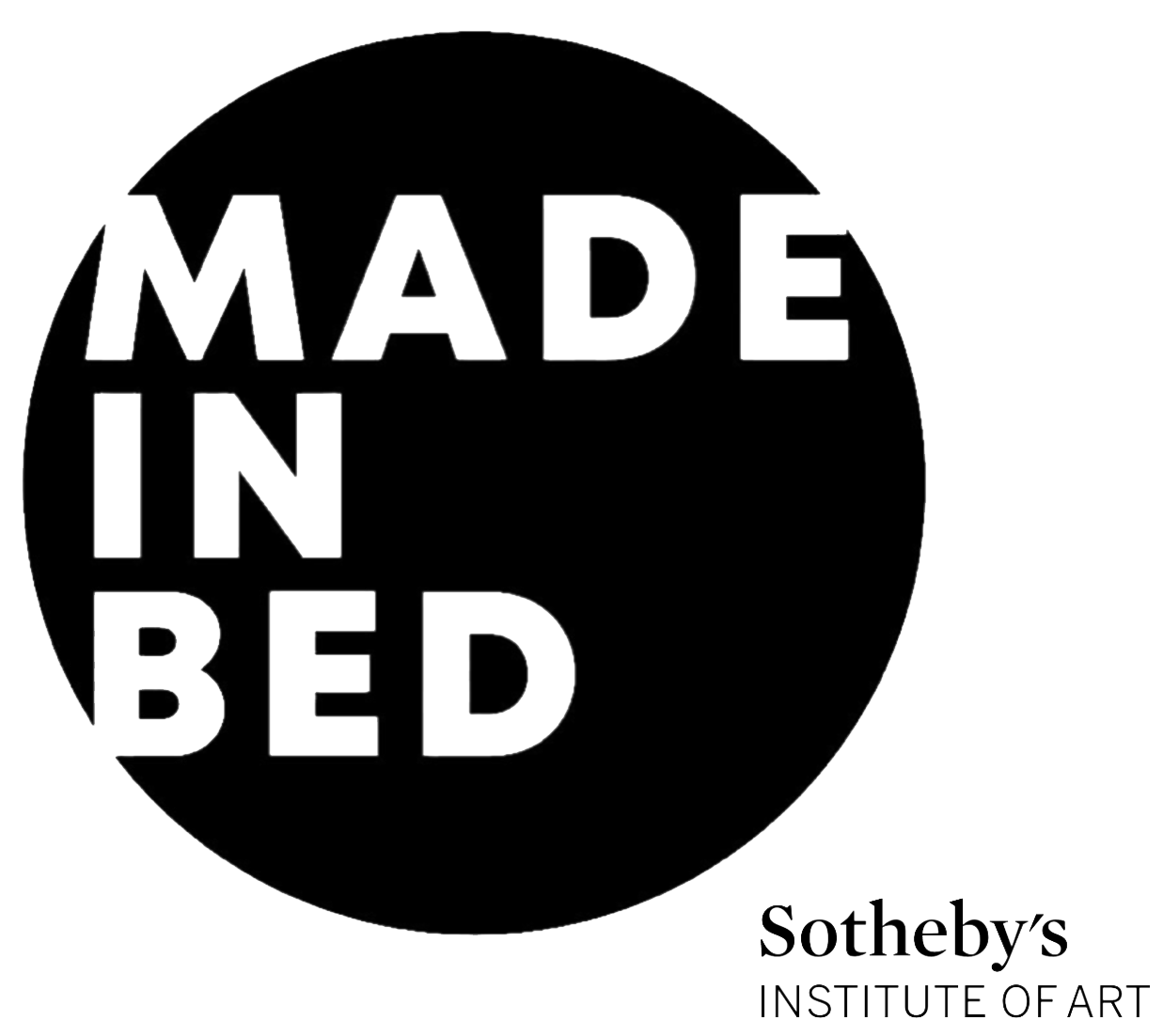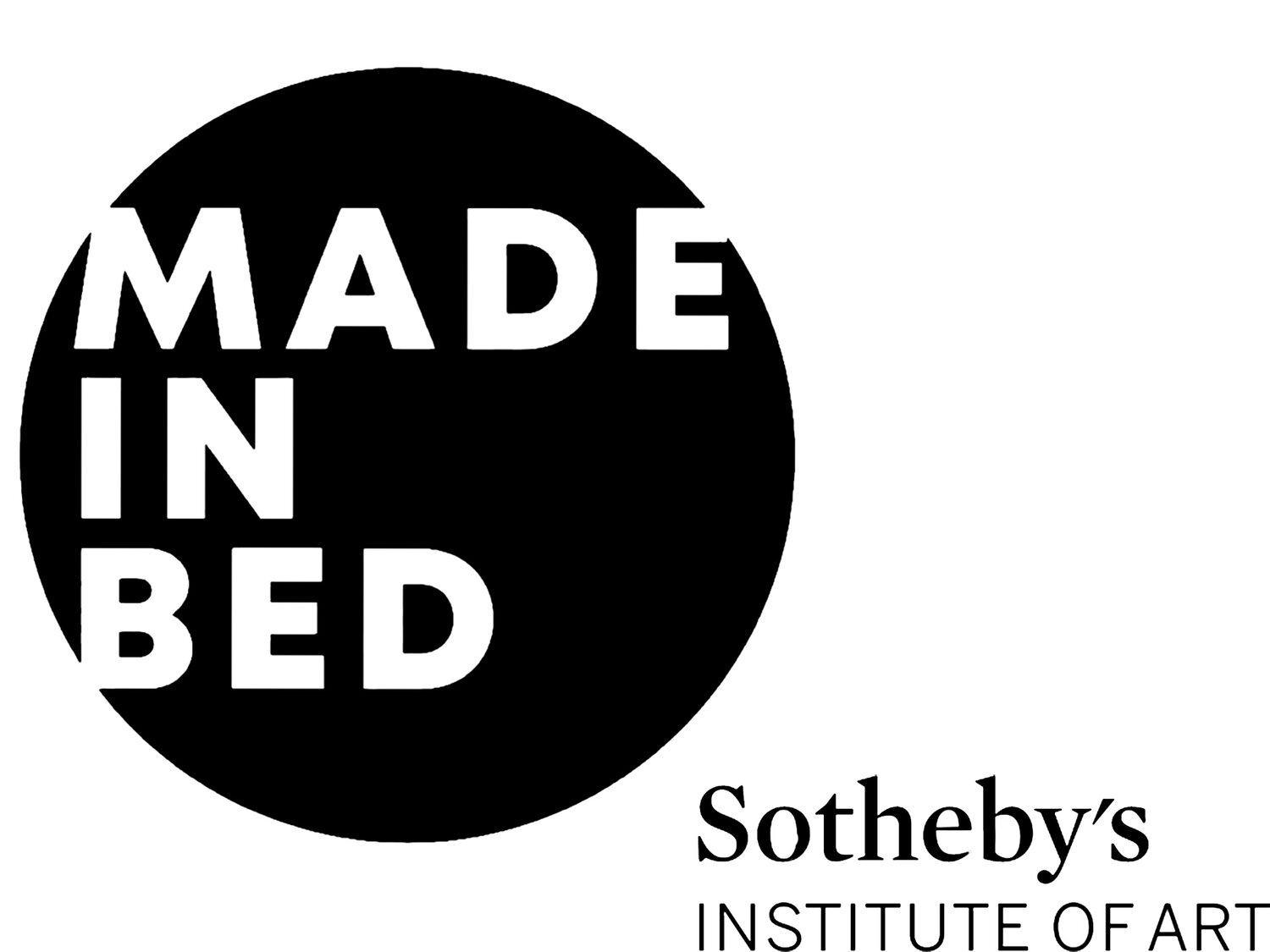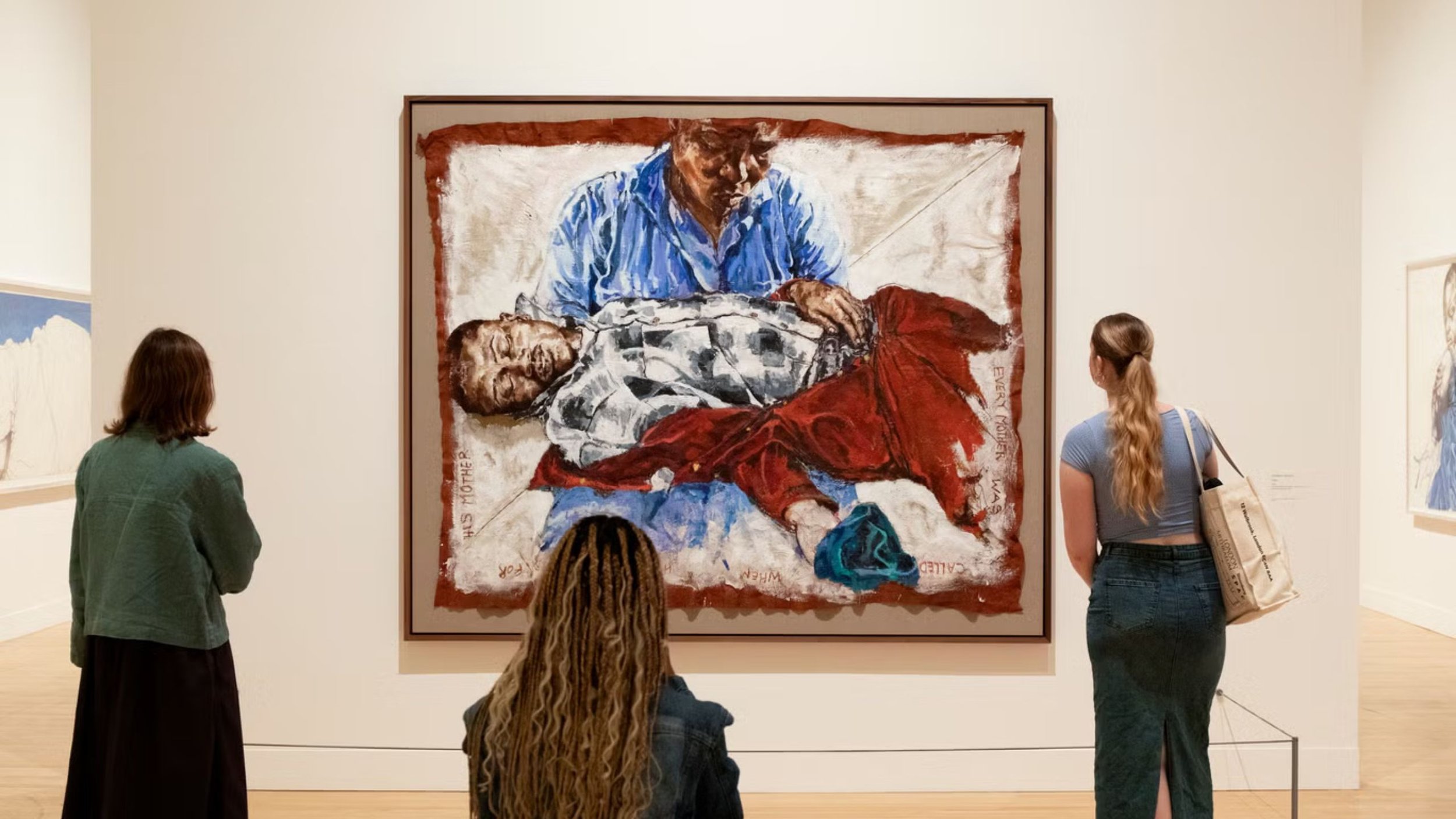'Babes in the Artworld': The Power of Collective Resilience
Have you ever felt a pang of FOMO while scrolling through the Instagram feeds of your art world favourites? If so, you are not alone. At times, the art world can seem like an exclusive club—filled with glamorous parties and picturesque group vacations to enviable destinations.
The once-familiar image of the ‘starving artist’ feels outdated—perhaps even mythical—when you see artists racking up passport stamps from their fifth international trip for yet another art fair. But is this really what it means to work in the art world today? The answer is both yes and no. While it may be true for some, it certainly is not the full picture.
Toyin Ojih Odutola, Representatives of State, 2016-17, pastel, charcoal and graphite on paper, 185.1 x 128 cm. Photo Courtesy: Jack Shainman Gallery.
Beneath the glamour of Instagram feeds displaying glittering art openings with flowing prosecco and spontaneous globetrotting lies a much different reality. For many in the UK, the appeal of being an artist has come under scrutiny, after a recent report by CREATe, commissioned by the Design and Artists Copyright Society (DACS) revealed deep disparities and challenges within the UK’s visual arts sector.
Lubina Himid, Between the Two my Heart is Balanced, 1991, Acrylic on Canvas, 121.8 x 152.4 cm. Photo Courtesy: Hollybush Gardens.
Released this November, the report: ‘UK Visual Artists (2024) A survey of earnings and contracts’ [1] explores issues related to earnings, contracts, and rights, uncovering systemic barriers that threaten the sustainability of creative careers. The findings paint a sobering picture, with declining earnings for creators across the board and significant gaps in diversity within the industry.
It is important to note that this is based on responses from 1,241 artists—a mere 8.9% response rate. Of the responses, only 14% of respondents identified as disabled, compared to 24.4% of the UK population. Meanwhile, Asian and Black artists were underrepresented, accounting for less than half their proportion in the general workforce, highlighting entrenched inequities in access and opportunity.
Gender disparities also emerged: while women represented 45.7% of survey respondents, this was still below their 51.7% share of the UK population. Another striking finding was the impact of socio-economic privilege. More than half (53.3%) of respondents hailed from the highest socio-economic backgrounds—double the proportion found in the UK workforce—underscoring the financial barriers many face when pursuing a career in the arts.
On a positive note though, individuals identifying as non-binary or with other gender identities were represented at a higher rate among visual artists than in the general population, suggesting that the arts may offer a more inclusive space for those outside traditional gender norms.
Sola Olulode, Whatever the Weather, 2021. Pastel, charcoal, ink, oil and pigment on canvas, 152 × 122 cm. Photo Courtesy: Ed Cross Gallery
Nonetheless, the report makes clear the urgent need to address these inequities. It calls for action to protect not only artists’ livelihoods but also the diversity of voices that shape culture by addressing systemic challenges related to earnings, contracts, and rights.
Given these challenges, one might wonder: what keeps artists going? What fuels their unwavering drive? In one of my favourite WhatsApp groups ‘Babes in the Artworld,’ I found the answer to this question.
It was Monday, 25 November 2024, and like any other day, the group chat was alive with invitations, opportunities, and gratitude being thrown into the group providing instant glimmers (opposites of triggers). Then, a link to a Guardian article by Lanre Bakare, their Arts and Culture correspondent, came through, with the title 'Britain faces ‘talent drain’ of visual artists as earnings fall by 40% since 2010' and an image of a sullen looking Larry Achiampong, an artist we love dearly and respect highly [2].
Saziso Phiri, Freelance Curator, and former Associate Artistic Director of New Art Exchange—a ground-breaking, award-winning, and internationally recognized creative space in the heart of Hyson Green, Nottingham—who had broken the news said, “whilst not surprising, this report is heart breaking.”
Artist Larry Achiampong said the fees artists receive have plummeted and that he had started to consider changing career. Photo Courtesy: Linda Nylind/The Guardian
As people clicked the link and read the opening paragraph, responses started to come through. There was a sense of recognition, tinged with frustration and disappointment, with each ping.
I think it’s also important to note that when reaching out to artists to share their responses to the report, not every request was met with welcome arms. The report had a triggering effect for some, leaving them feeling weighed down. The reality of their lived experiences had been conflated to a few numbers in yet another report that may not bring about the systemic changes necessary to remove the barriers to their professional growth.
Nonetheless, true to its nature, that sense of despondency dominating the chat on that Monday morning soon transformed to resilience, with words echoing the sentiments of Adrienne Maree Brown, author of Emergent Strategy: Shaping Change, Changing Worlds:
“Organizing takes humility and selflessness and patience and rhythm, while our ultimate goal of liberation will take many expert components… Our work is intersectional and multifaceted. Nature teaches us that our work has to be nuanced and steadfast. And more than anything, we need each other—at our highest natural glory—in order to get free.”
-Adrienne Maree Brown
Bryony Ella, Film Still of The Colour of Transformation, 2022. Photo Courtesy: Bryony Ella
It was quickly evident that beyond a passion for their craft, the fuel lighting the fire in their souls was a belief in and understanding of art’s transformative power, strengthened by the interconnected network of artists and practitioners who serve as a lifeline for each other in an era defined by funding cuts, austerity, and the rapid pace of digital change (and, perhaps, the rise of AI).
And here is where the true essence of this article lies, not in simply sharing of the report’s findings. Why waste time lamenting on what we already know? This article is not about the report, it is about the ‘Babes in the Artworld’ group and its ability to allow its participants to achieve dreams once deferred. The article is about collective radical imagining and re-imagining as a necessity to combat a world full of systems that were created in the mind of someone that did not imagine you surviving, let alone thriving.
The group of over 300 members, founded by Bolanle Tajudeen—Founder of Black Blossoms School of Art and Director of Bolanle Contemporary—is intergenerational, with members at various stages of their careers. Amongst the three hundred creatives and art practitioners, there are senior directors, leading visionaries, game changers, MBE recipients, Royal Acadamy Graduates, and artistic science researchers and artists. Creating a dynamic that fosters meaningful community-building, networking, and mutual learning.
When asked why she started the group, Tajudeen replied:
“The group was created out of a desire to foster genuine community and support for those navigating the art world, particularly Black women, non-binary people, and other underrepresented voices. Too often, the art world can feel isolating, especially for those of us working outside its traditional centres of power. The group serves as a space where we can exchange ideas, opportunities, and encouragement—a kind of collective resilience.”
Gallerist Bolanle Tajudeen at her debut exhibition of Djofray Makumbu, Minor attractions 2024. Photo Courtesy: Isabelle Tilli Courtesy of Minor Attractions.
For the participants of the group, this community is a source of both inspiration and survival. Within this group chat, friendships, mentorships, and collaborative opportunities are formed reinforcing the idea that art is not only about individual achievement but about collective growth.
Speaking on what fuels her to remain in the art world, Tajudeen explained:
‘I love looking at art, I love working with artists, and I love being part of the arts. It’s not just about the stories artists are telling; it’s about the quality of their practice. Witnessing the excellence and innovation that artists bring to their work, particularly those from underrepresented backgrounds, is endlessly inspiring. Being able to support and amplify these practices while contributing to a field that challenges, transforms, and connects us is what keeps me motivated.’
Despite economic hardships, the ‘Babes in the ArtWorld,’ as they refer to themselves collectively, continue to create because they know of and have experienced the power of art to spark change. The existence of a world, which was once only imagined by those who paved the way (like 2022 Golden Lion Winner, Dame Sonia Boyce, and current Turner Prize nominee, Claudette Johnson) is a major source of hope. London has long been a crossroads. The 1970s saw the birth of the Black Arts Movement and The Caribbean Arts Movements, where art intersected with activism, streets became canvases for social commentary, and where creativity was transformed to a tool for racial and social justice. Today, this legacy continues as artists respond to current events, advocate for social equity, and foster connections in times of need.
Installation view of Claudette Johnson’s presentation in Turner Prize, Tate Britain, 2024. Photo Courtesy: Josh Croll by courtesy of Tate Britain.
This resilience reflects a broader truth: art is not a luxury; it is a necessity, especially when you are a Black woman or non-binary art practitioner. While the challenges are real for these ‘Babes,’ the community they have built through this WhatsApp group offers moments of renewal and inspiration. From shared laughter at gallery openings to spontaneous studio collaborations, these connections remind them why they create in the first place.
As funding from Arts Council England and other bodies faces mounting pressure, this Whatsapp group stands as a testament to the power of art to thrive—not just through financial support but through collective effort. These artists continue because they must. Within this vibrant network of connections, they find not only survival but a shared belief in the value of their work.
From the conversations that ensued, I was reminded that in the face of adversity, Black women and non-binary artists embody resilience, proving that the heart of creativity lies not in the glamour of openings but in the people who make it all happen. Radical imagination, collective resilience, and a shared commitment to art’s transformative power make all the difference. Together, they keep dreaming, creating, and inspiring—knowing that the world they want is only possible through art, because art is the shortest distance from imagination to reality.
Birungi Kawooya, A Space for Resistance and Renewal, Vital Signs, 2024. Photo Courtesy: The Science Gallery London
Footnotes
[1] UK Visual Artists: A survey of earnings and contracts https://cdn.dacs.org.uk/uploads/documents/UK-Visual-Artists_A-survey-of-earnings-and-contracts.pdf?v=1732286727
[2] Bakare. L, 'Britain faces ‘talent drain’ of visual artists as earnings fall by 40% since 2010' The Guardian, 2024 https://www.theguardian.com/artanddesign/2024/nov/25/britain-faces-talent-drain-visual-artists-earnings-fall
Chantel Akworkor Thompson
Agents of Change Editor, MADE IN BED









